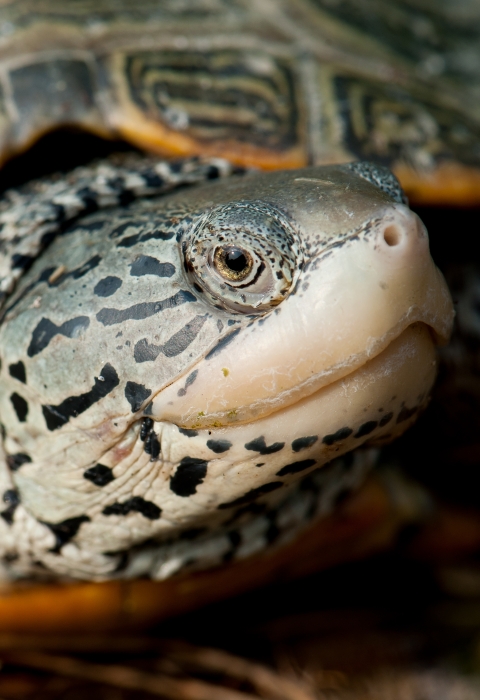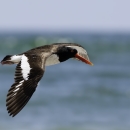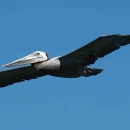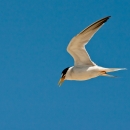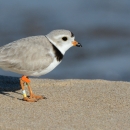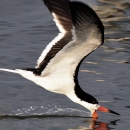Fisherman Island National Wildlife Refuge is closed to all public access to protect sensitive species and habitats. The only exceptions are guided walking tours of the island conducted on Saturdays from October through February. Reservations for these tours are made through Eastern Shore of Virginia National Wildlife Refuge and will open on September 1st.
Visit Us
Though Fisherman Island is closed to general visitation, you can still venture out to catch a glimpse of fall and winter wildlife by registering to join one of our guided tours.
Guided tours are offered on Saturdays from October through February of each year, and during special events. The tour introduces visitors to the unique variety of wildlife found on the island. As you pass through several habitats, you will learn about wildlife management on refuges, explore the diversity of wildlife, and discover the rich history of Fisherman's Island and the role it played during World War II.
- Meets at 8:30 am at the Eastern Shore of Virginia National Wildlife Refuge Visitor Center
- The walking tour travels 2 miles with varying difficulty over soft and hard-packed sand
- Advance registration is required and taken on a first-come, first-serve basis
- The tour is free
- To register contact us at 757-331-3425 or 757-331-2760
- Please leave a message with your name, phone number, number in your group, and what date you would like to tour with us. We will give you a call back within 5 business with the status of your reservation.
Reservations are accepted starting September 1st.
Location and Contact Information
About Us
Virginia's chain of barrier islands are one of only 17 sites in the United States classified as a “Wetland of International Importance.” Fisherman Island National Wildlife Refuge is located on the southernmost of these islands, at the mouth of the Chesapeake Bay, and separated from the Eastern Shore of Virginia by about one-half mile of water. The refuge, designated at an Important Bird Area, was only 25 acres in the late 1800's but due to the dynamic nature of barrier island it has grown to nearly 2,000 acres today!
Tours
Guided tours are offered on Saturdays from October through February of each year, and during special events. The tour introduces visitors to the unique variety of wildlife found on the island. As you pass through several habitats, you will learn about wildlife management on refuges, explore the diversity of wildlife, and discover the rich history of Fisherman's Island and the role it played during World War II.
- Meets at 8:30 am at the Eastern Shore of Virginia National Wildlife Refuge Visitor Center
- The walking tour travels 2 miles with varying difficulty over soft and hard-packed sand
- Advance registration is required and taken on a first-come, first-serve basis
- The tour is free
- To register contact us at 757-331-3425 or 757-331-2760
- Please leave a message with your name, phone number, number in your group, and what date you would like to tour with us. We will give you a call back within 5 business with the status of your reservation.
Reservations are accepted starting September 1st.
What We Do
Since this refuge is such an important site for nesting coastal birds, we have an active inventory and monitoring program. Refuge staff use their data and observations to make informed habitat management decisions. The information can also be shared with the broader scientific community to contribute to species research and help partners and other refuges in our shared goal of protecting migratory birds and their habitats.
Our Species
Fisherman Island serves as one of the country’s most valuable stopovers for migratory birds. Across the refuge dunes, swales and shrub thickets provide a vital link for millions of songbirds, raptors, shorebirds, and butterflies to rest and refuel before continuing the rigorous journey to their wintering grounds. With no public access outside of guided tours, its no wonder that the spring and summer thousands of brown pelicans and royal terns nest in the dunes. At the same time, American oystercatchers take advantage of choice beach locations to raise their young and female diamondback terrapins haul out on the island to lay their eggs.
Projects and Research
The Diamondback Terrapin Crossing Prevention Project is a collaboration between the U.S. Fish and Wildlife Service and the Chesapeake Bay Bridge-Tunnel District that seeks to reduce road mortality for terrapins which are listed as a Species of Greatest Conservation Need in the state of Virginia. The recent installation of a concrete barrier should both reduce road crossings and improve safety as it will prevent motorists from swerving to avoid hitting the animals. Terrapins that encounter the barrier are forced to to turn around and nest in the safety of the ample habitat found on their current side of the roadway. Look for these barriers running alongside Highway 13 as you travel over Fisherman Island via the Chesapeake Bay Bridge-Tunnel.
